Schaeffler’s REPXPERT Alistair Mason talks us through the replacement of the dry double clutch on a 2014 Audi A3 1.6 TDI using Schaeffler’s LuK 2CT repair solution.
The fault reported with the car was juddering when pulling away and when driving harsh gear changes were felt, a short test drive confirmed this, the gearbox control unit was checked for fault codes and two faults were stored, P177D and P279800, these were cross referenced and indicated that the clutch replacement was required, the mileage on the vehicle was over 140,000 so clutch replacement was advised.
Double clutch gearboxes are now becoming more popular in modern day cars, quite simply, they are a manual gearbox and clutch system being controlled and operated by an electronic control unit, this means the vehicle is always in the correct gear and gear changing is almost seamless, this helps reduce the emissions and helps the vehicle manufacturers meet the latest emissions targets.
Schaeffler offer the complete repair solution for the dry clutch DSG gearbox, the clutch kit, specialist tooling, IMI certified training, full repair instruction manuals and REPXPERT repair videos.
With a book time of over 6.5 hours and some guidance from Schaeffler’s REPXPERTs, this is an excellent repair for any independent or specialist garage.
Equipment required
- Two post ramp
- Engine support
- Transmission jack
- Schaeffler’s 2CT DSG tool kit
- Diagnostic tool with compatible software
With the vehicle placed on the ramp, open the bonnet and remove the engine cover, air filter assembly, battery cover, battery and battery carrier, this will now give good access to the top of the gearbox.
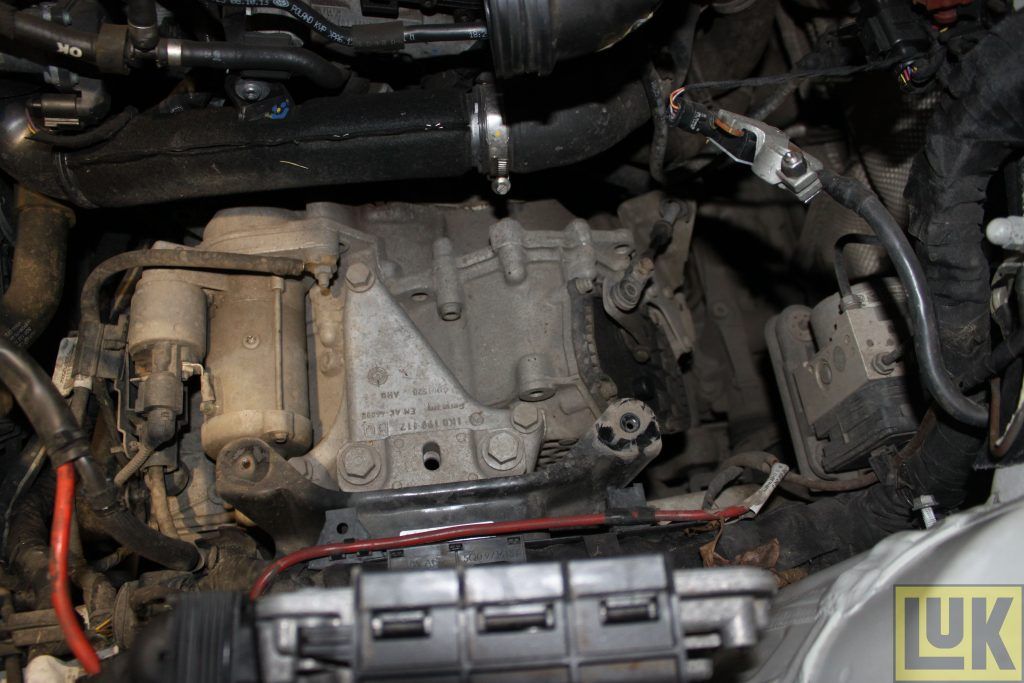
Disconnect the gear change cable and then remove the starter motor, an important procedure to carry out when removing these gearboxes is to remove the breather caps from the gearbox and mechatronics unit and fit the blanking caps supplied with the DSG tool kit and also with the replacement clutch kit, this will ensure that no oil is lost from the gearbox and more importantly from the mechatronics unit (figure 4, 5 & 6), at this point, remove the upper bell housing bolts.
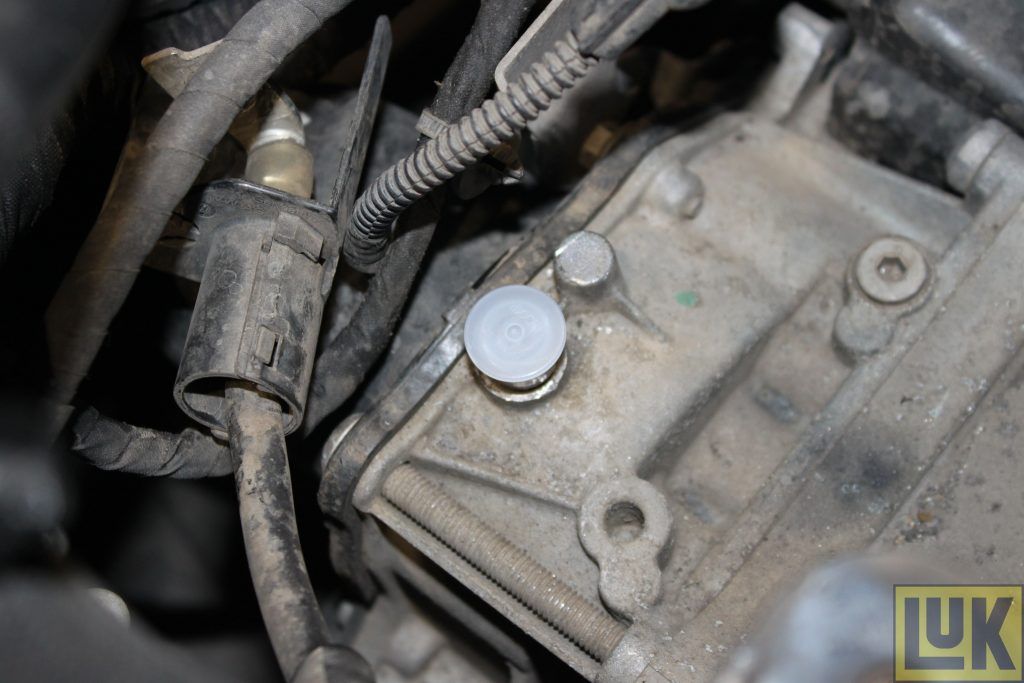
Raise the vehicle to waist height and remove both front wheels, then remove the N/S/F wheel arch liner, then raise the vehicle to gain access to the underside.
Now remove the engine under tray and disconnect the wiring loom and bracket that go to the mechatronics unit located on the front of the gearbox, now remove the front sub-frame by releasing both bottom ball joints, removing the four bolts that hold the steering rack to the sub-frame and support the steering rack, remove the exhaust mounting, disconnect the anti-roll bar links, remove the gearbox pendulum mount, disconnect the wiring loom for the oil level sensor and the auxiliary coolant pump and stow in a safe area, support the sub-frame with a transmission jack, remove the four sub-frame bolts and then lower the sub-frame on the transmission jack and stow in a safe area.
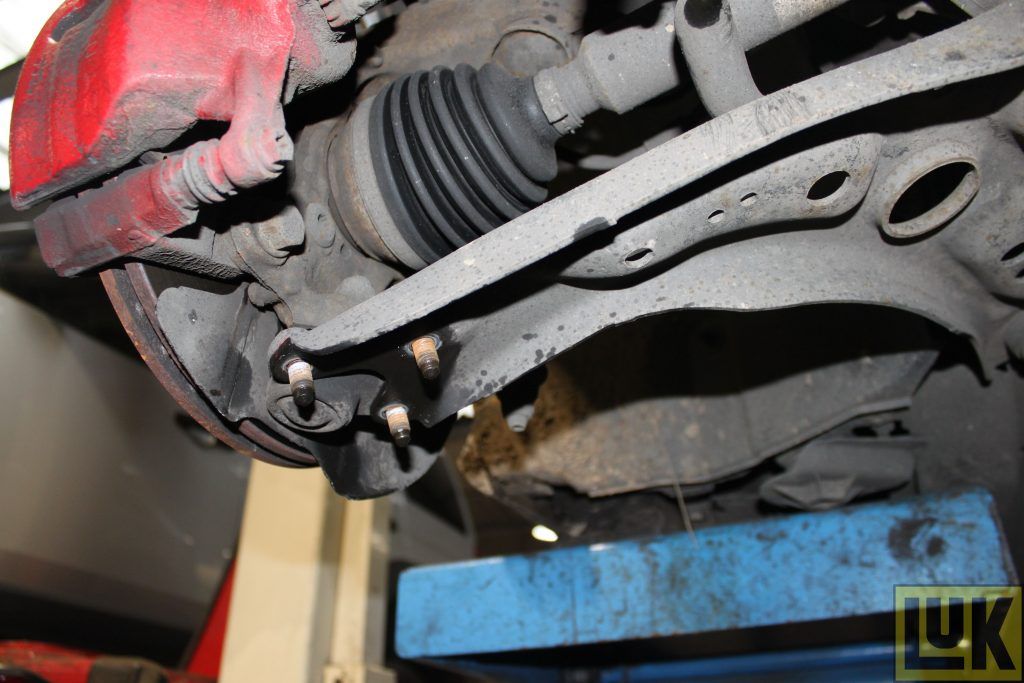
Now remove the driveshaft to gearbox flange bolts on both sides and secure the driveshafts away from the gearbox, to aid removal of the gearbox, remove the driver’s side driveshaft flange by removing the centre bolt, remove the lower bell housing bolts leaving one main bolt that is easily accessible to support the gearbox.
Support the engine using an engine support, remove the gearbox mounting in the engine bay, lower the engine support slightly to aid removal of the gearbox, support the gearbox using a transmission jack and then remove the accessible bell housing bolt and then ease the gearbox away from the engine, once free from the engine, lower the transmission jack and remove the gearbox from the vehicle.
Place the gearbox on a suitable work surface and attach the support leg which is supplied in the tool kit, the gearbox will now safely sit with the bell housing and clutch facing upwards.
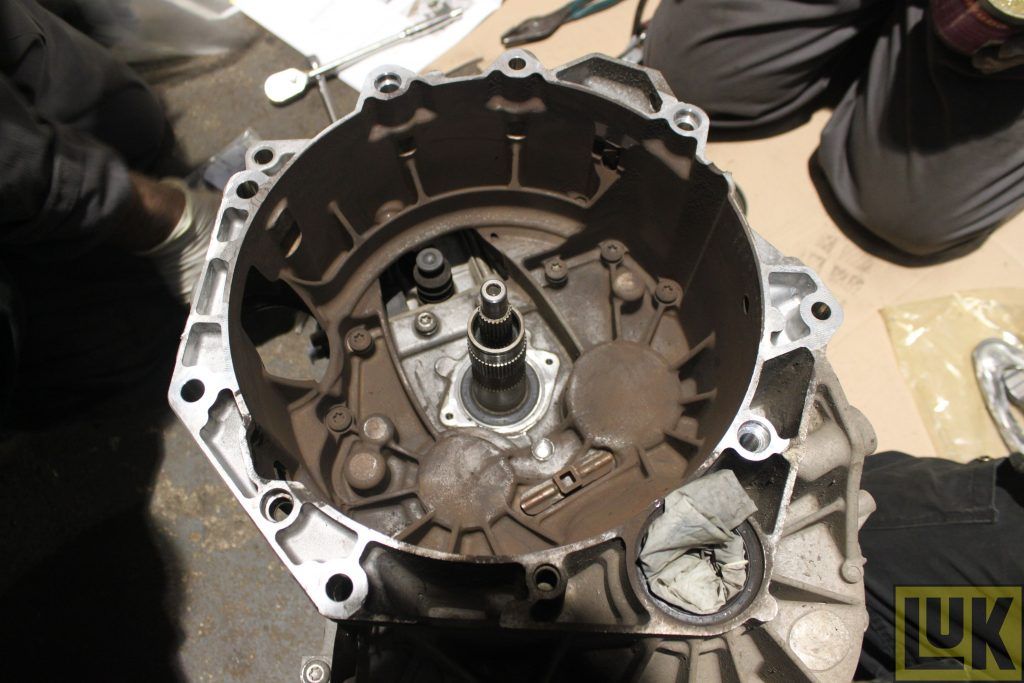
Clutch removal process
- Remove the clutch hub snap ring and clutch hub.
- Remove the clutch retaining snap ring from input shaft.
- Draw the clutch assembly off the input shaft using Schaeffler’s 2CT tool kit.
- Remove the two clutch engagement levers, shims and bearing.
- Now inspect the input shaft oil seals and check for any bearing play on the input shafts, clean out the bell housing using brake and clutch dust cleaner to ensure the new clutch assembly remains uncontaminated. At this point we are now ready to install the new clutch, the installation process is as follows,
- Install the new clutch engagement levers.
- Follow the shimming process for both clutches using the using the pre-determined distance gauges and shimming gauge.
- Adjust the shims if required to the tolerances of that specific clutch.
- Install the new clutch using Schaeffler’s 2CT tool kit.
- Confirm the free play on both clutches is correct using a DTI gauge and install the new clutch hub.
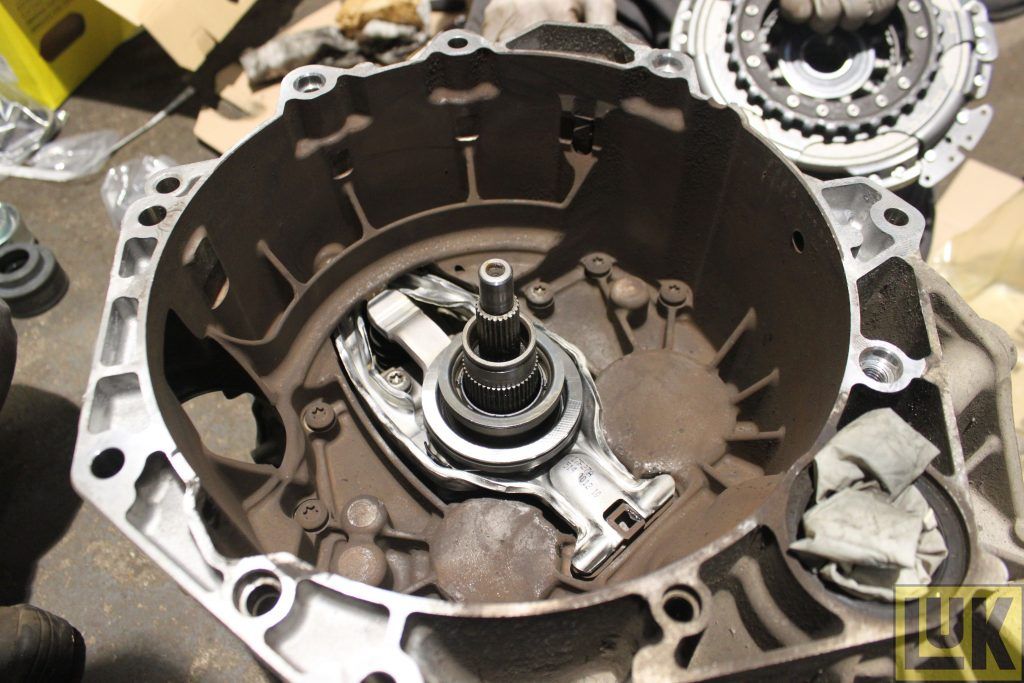
In this repair, the customer requested that the dual mass flywheel was replaced, the flywheel was replaced and the new bolts torqued to the manufacturers specifications, note – always ensure when replacing the dual mass flywheel that the flywheel has the correct number of ring gear teeth, there is a three tooth difference between vehicles with conventional starting systems and vehicles with start/stop systems, if the incorrect flywheel is fitted, basic setting and adaptions cannot be carried out correctly.
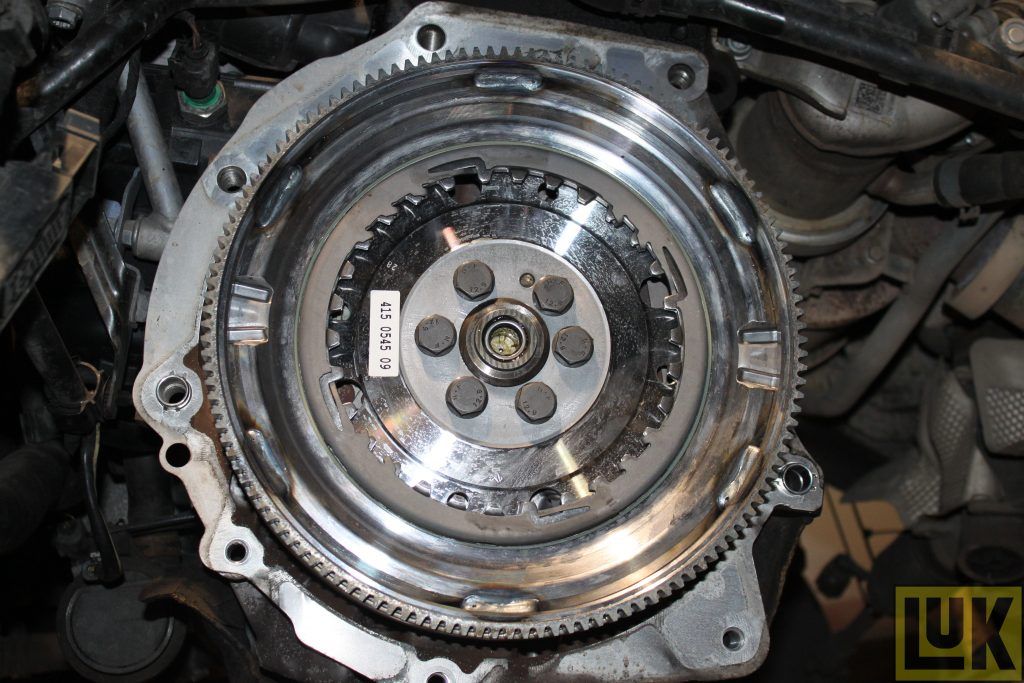
The gearbox can then be installed back into the vehicle, installation is in reverse order of removal, ensure all bolts are replaced if required and torqued to the manufacturers specification.
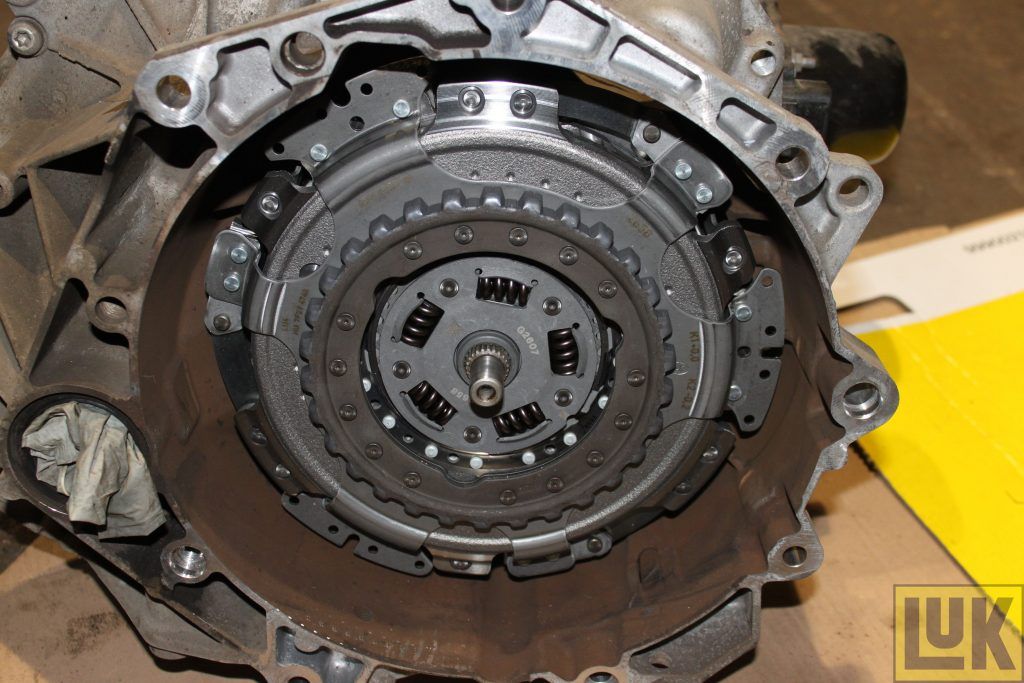
Once installation is complete, the gearbox control unit needs to be reset with a compatible diagnostic tool, turn on the ignition and carry out basic settings on the gearbox control unit, when complete, using the diagnostic tool, carry out an adaptive test drive to reset the gearbox control unit/Mechatronics unit.
For further information on Schaeffler products, training, fitting instructions, repair times go to the REPXPERT garage portal by selecting ‘more details’ below or call the Schaeffler technical hotline on 01432 264264.







